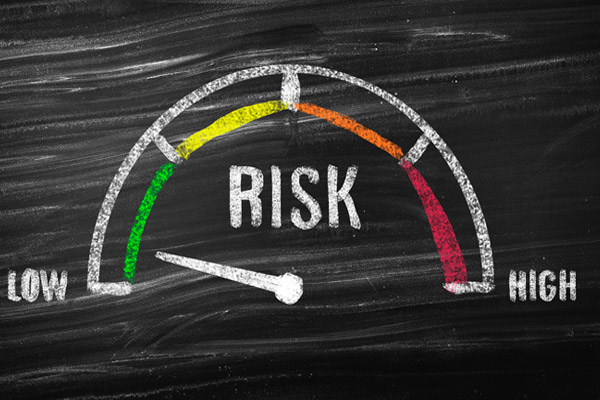Assessing investment risk is crucial for any investor or financial professional. Effective risk assessment helps in understanding potential losses and making informed decisions. Advanced methods go beyond basic evaluations, providing deeper insights into potential vulnerabilities and systemic issues. For those seeking comprehensive guidance on managing investment risks and maximizing potential returns, Proficator offers valuable educational resources that can help avoid pitfalls and optimize investment strategies.
Quantitative Risk Assessment Techniques
Value at Risk (VaR)
Value at Risk (VaR) quantifies the potential loss in value of an investment portfolio over a specified period for a given confidence interval. For example, a one-day VaR of $1 million at a 95% confidence level implies that there is a 5% chance the portfolio will lose more than $1 million in one day. The primary methods to calculate VaR include historical simulation, variance-covariance, and Monte Carlo simulation. Each method has its strengths and limitations. Historical simulation uses historical returns, variance-covariance assumes normal distribution, and Monte Carlo simulation uses random sampling to model various outcomes.
Conditional Value at Risk (CVaR)
CVaR, or Expected Shortfall, provides an estimate of the average loss given that the loss exceeds the VaR threshold. While VaR only measures the threshold level of risk, CVaR gives insight into the tail of the distribution, providing a more comprehensive view of potential extreme losses. This method is particularly useful in risk management for understanding the impact of severe market events.
Stress Testing and Scenario Analysis
Stress testing involves evaluating how an investment portfolio performs under extreme conditions, such as financial crises or market crashes. Scenario analysis, on the other hand, assesses the impact of specific hypothetical scenarios on a portfolio. These methods help identify vulnerabilities by simulating adverse conditions, allowing investors to gauge potential losses and make adjustments accordingly.
Advanced Statistical Models
Monte Carlo Simulation
Monte Carlo Simulation involves generating a large number of random scenarios to model potential outcomes of investments. By simulating thousands of possible future states, it provides a range of potential risks and returns. This method accounts for various uncertainties and is valuable for complex portfolios where analytical solutions are impractical.
GARCH Models (Generalized Autoregressive Conditional Heteroskedasticity)
GARCH models are used to estimate volatility clustering, a phenomenon where high-volatility periods are followed by more high-volatility periods. These models adjust volatility estimates dynamically based on past data, providing more accurate forecasts of future risks. They are crucial for understanding market volatility and its impact on investment risk.
Copulas for Correlation Modeling
Copulas are functions that describe the dependence structure between random variables. Unlike traditional correlation measures, copulas can model complex dependencies and tail dependencies, which are crucial during market stress. By using copulas, investors can better understand how different assets or markets interact under extreme conditions.
Behavioral Risk Assessment
Behavioral Finance Insights
Behavioral finance explores how psychological factors and cognitive biases affect investment decisions. Biases such as overconfidence, loss aversion, and herding can lead to suboptimal risk assessment and decision-making. Understanding these biases helps investors recognize and mitigate irrational behaviors that could impact risk.
Investor Sentiment Analysis
Investor sentiment analysis involves assessing market mood through indicators such as news sentiment, social media trends, and investor surveys. Sentiment analysis can provide early warnings of market shifts and help in understanding the psychological factors influencing market movements, offering a qualitative aspect to risk assessment.
Systemic Risk Measurement
Network Theory in Finance
Network theory examines the interconnectedness of financial institutions and markets. By analyzing networks of financial relationships, it is possible to identify systemic risks arising from the failure of one entity affecting others. Network analysis helps in understanding the propagation of shocks and systemic vulnerabilities in the financial system.
Too Big to Fail and Systemic Risk Models
Systemic risk models assess the risks posed by institutions deemed “too big to fail” and their potential impact on the broader financial system. These models evaluate how the failure of large institutions could trigger widespread financial instability and are crucial for regulatory frameworks aimed at mitigating systemic risks.
Qualitative Risk Assessment Methods
Expert Judgment and Delphi Method
Expert judgment involves consulting experienced professionals to assess risk based on their knowledge and experience. The Delphi method is a structured approach where a panel of experts provides forecasts or assessments anonymously. Iterative rounds of questioning refine estimates and reduce biases, offering valuable insights into complex risk scenarios.
Scenario Planning and Strategic Risk Assessment
Scenario planning involves creating detailed narratives of potential future states to evaluate their impact on investments. By exploring various scenarios, investors can assess how different factors might influence risk and prepare strategies to address potential challenges.
Technological Innovations in Risk Assessment
Artificial Intelligence and Machine Learning
AI and machine learning enhance risk assessment by analyzing vast amounts of data and identifying patterns that traditional methods might miss. Machine learning algorithms can predict market trends, assess credit risks, and improve portfolio optimization through advanced predictive analytics.
Blockchain and Risk Transparency
Blockchain technology enhances risk transparency by providing immutable records of transactions. This transparency helps in tracking and verifying financial activities, reducing fraud, and enhancing trust in financial reporting. Blockchain’s decentralized nature also adds security and reduces systemic risks associated with centralized systems.
Integrating Risk Assessment into Investment Strategies
Risk Mitigation Techniques
Effective risk management involves strategies like diversification, hedging, and insurance. Diversification spreads investments across various assets to reduce risk. Hedging uses financial instruments to offset potential losses, while insurance protects against specific risks. Integrating these techniques helps in managing and mitigating investment risks.
Dynamic Risk Management
Dynamic risk management involves continuously adjusting risk strategies based on changing market conditions. This approach requires regular monitoring and rebalancing of portfolios to respond to emerging risks and opportunities. It ensures that risk management practices remain relevant and effective in a volatile market environment.
Conclusion
Advanced methods for assessing investment risk offer a comprehensive toolkit for understanding and managing financial uncertainties. By combining quantitative models, statistical techniques, behavioral insights, and technological innovations, investors can gain a deeper understanding of potential risks and develop more robust strategies. Staying informed about emerging trends and integrating these advanced methods into investment strategies will enhance risk management and contribute to better financial outcomes.






